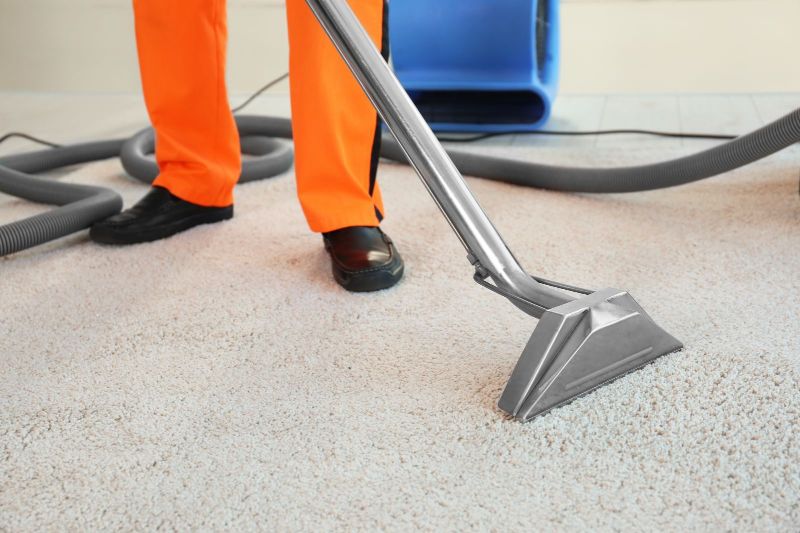Blog
 July 7th, 2023
July 7th, 2023
The Science Behind Carpet Cleaning: Understanding the Process
Carpets are an integral part of our homes, providing warmth, comfort, and aesthetic appeal. However, they also accumulate dirt, dust, allergens, and stains over time, which can negatively impact indoor air quality and overall cleanliness. This is where carpet cleaning comes into play. But have you ever wondered about the science behind carpet cleaning? How does it actually work? In this blog post, we will dive deep into the process of carpet cleaning and explore the scientific principles that make it effective.
The Importance of Carpet Cleaning
Before delving into the science, it's important to understand why carpet cleaning is crucial. Carpets act as a filter, trapping dirt, bacteria, allergens, and even volatile organic compounds (VOCs) from the air. Regular cleaning not only removes these contaminants but also extends the lifespan of your carpets, improves indoor air quality, and promotes a healthier living environment for you and your family.
Soil Suspension and Extraction
The first step in carpet cleaning involves soil suspension. This process loosens and separates dirt particles from carpet fibers, making them easier to remove. There are two primary methods for achieving soil suspension: dry cleaning and wet cleaning.
- Dry Cleaning: Dry cleaning methods typically involve the use of absorbent compounds or powders that are applied to the carpet. These compounds contain special solvents and detergents that attract and absorb soil particles. Once applied, the carpet is agitated using a brush or a machine, allowing the cleaning agents to penetrate the fibers. The absorbed dirt is then vacuumed away, leaving the carpet refreshed.
- Wet Cleaning: Wet cleaning, also known as hot water extraction or steam cleaning, is a widely used method in professional carpet cleaning. It involves the application of hot water or steam, combined with environmentally friendly cleaning agents, to the carpet. The heat and pressure help break down dirt, stains, and bacteria, while the cleaning agents further aid in soil suspension. Finally, a powerful vacuum extracts the dirt and moisture, leaving behind clean and sanitized carpets.
pH Levels and Cleaning Agents
pH levels play a crucial role in the carpet cleaning process. pH is a measure of the acidity or alkalinity of a substance, and different cleaning agents have different pH levels. Understanding pH is essential to select the appropriate cleaning agent for a particular carpet.
- Acidic Solutions: Acidic cleaning agents are effective in removing alkaline-based stains, such as coffee or wine spills. They work by neutralizing the alkaline stains and restoring the carpet's pH balance.
- Alkaline Solutions: Alkaline cleaning agents are commonly used in carpet cleaning. They are effective at removing oily or greasy stains, as well as general dirt and grime. These agents work by breaking down the oily substances, allowing them to be easily rinsed away.
- pH-Neutral Solutions: pH-neutral cleaning agents are preferred for delicate carpets or those made from natural fibers. They provide a gentle yet effective cleaning process without causing any damage.
The Role of Mechanical Agitation
Mechanical agitation is a crucial aspect of carpet cleaning, regardless of the method used. Agitation helps to loosen dirt particles embedded in the carpet fibers, allowing the cleaning agents to penetrate more effectively. This can be achieved through the use of brushes, rotary machines, or oscillating pad systems. The choice of agitation method depends on the type of carpet and the level of soiling.
Drying and Airflow
Proper drying is essential to prevent mold growth and ensure the longevity of your carpets. After cleaning, the carpets should be thoroughly dried using proper airflow and ventilation. High-powered fans or air movers can be used to expedite the drying process.
Carpet cleaning is a science that combines various principles to achieve clean, fresh, and healthy carpets. Understanding the process behind carpet cleaning helps us appreciate the expertise and techniques employed by professional carpet cleaners. From soil suspension and extraction to the role of pH levels and mechanical agitation, each step plays a vital role in achieving optimal results.
Regular carpet cleaning not only enhances the appearance of your carpets but also contributes to a healthier indoor environment by removing allergens, dirt, and stains. By understanding the science behind carpet cleaning, you can make informed decisions about the methods, cleaning agents, and professionals you choose for maintaining the cleanliness and longevity of your carpets.
Remember, when it comes to carpet cleaning, it's often best to rely on the expertise of professional carpet cleaning services. They have the knowledge, experience, and equipment necessary to apply the scientific principles effectively and deliver outstanding results. So, next time you schedule a carpet cleaning session, you can appreciate the science behind it and enjoy the benefits of a fresh and clean carpet.